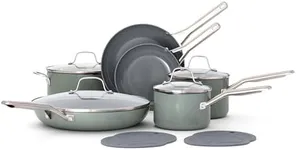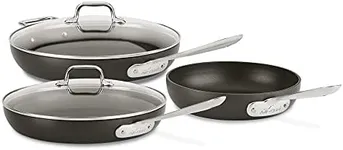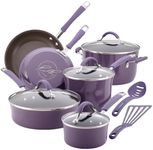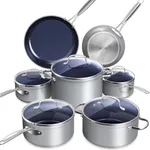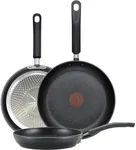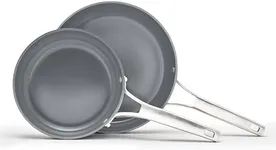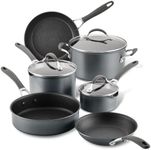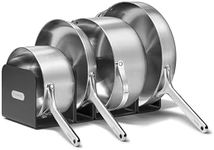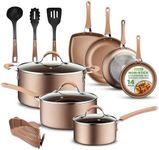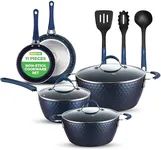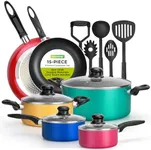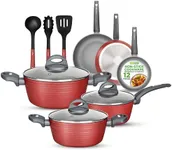Buying Guide for the Best Scratch Resistant Cookware
When it comes to picking scratch-resistant cookware, it's important to consider a few key specifications to ensure you get the best product for your needs. Scratch-resistant cookware is designed to withstand the wear and tear of daily cooking, maintaining its appearance and functionality over time. By understanding the key specs, you can make an informed decision and choose cookware that will serve you well in the kitchen.MaterialThe material of the cookware is crucial as it determines durability, heat conductivity, and scratch resistance. Common materials include stainless steel, hard-anodized aluminum, and ceramic. Stainless steel is highly durable and resistant to scratches but may not be as non-stick. Hard-anodized aluminum offers excellent heat distribution and is more scratch-resistant than regular aluminum. Ceramic cookware is naturally non-stick and scratch-resistant but may require more careful handling. Choose a material based on your cooking habits and preferences for durability and ease of use.
CoatingThe type of coating on the cookware affects its non-stick properties and scratch resistance. Non-stick coatings like Teflon are popular for their ease of use and cleaning, but they can wear off over time. Ceramic coatings are a good alternative, offering a non-stick surface that is also scratch-resistant. Some cookware features multiple layers of coating for added durability. If you frequently cook with metal utensils, look for cookware with a reinforced or diamond-infused coating for extra scratch resistance.
ThicknessThe thickness of the cookware impacts its heat distribution and resistance to warping. Thicker cookware tends to be more durable and provides even heat distribution, reducing the risk of hot spots that can cause food to stick and burn. However, thicker cookware can be heavier and may take longer to heat up. If you prefer lightweight cookware for easy handling, opt for a medium thickness that balances durability and convenience.
CompatibilityCompatibility refers to whether the cookware can be used on different types of stovetops, including gas, electric, induction, and ceramic. Not all cookware is suitable for all stovetops, so it's important to check the manufacturer's specifications. Induction-compatible cookware, for example, must have a magnetic base. If you have an induction cooktop, ensure the cookware you choose is compatible. Additionally, consider whether the cookware is oven-safe if you plan to use it for baking or broiling.
Ease of CleaningEase of cleaning is an important factor, especially if you cook frequently. Some scratch-resistant cookware is dishwasher safe, making cleanup a breeze. However, hand washing is often recommended to prolong the life of the non-stick coating. Look for cookware with a smooth surface and rounded edges to prevent food from getting stuck in crevices. If you prefer low-maintenance cookware, choose pieces that are easy to clean and maintain.
Handle DesignThe design of the handles affects the comfort and safety of using the cookware. Look for handles that are ergonomically designed and stay cool to the touch during cooking. Riveted handles are more secure and durable compared to welded or screwed-on handles. Some cookware features silicone or rubberized grips for added comfort and heat resistance. If you often move cookware from the stovetop to the oven, ensure the handles are oven-safe and can withstand high temperatures.
